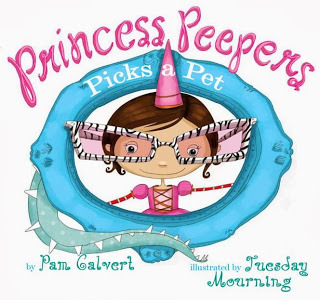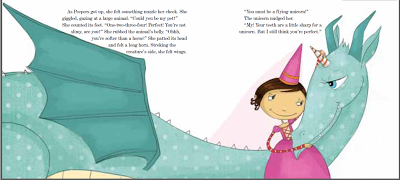Picture Book University: Storyboard

Welcome back! I hope you had a great Fourth of July celebration. I know I did and so...I'm a little behind on everything! But I didn't forget about you. :-)
So, today we'll be looking at something that's very important in the world of picture book writing--storyboard. You may have heard about this from an illustrator friend or maybe you watched a making of an animated movie and noticed the writers use storyboard. We are much like animators--we are bringing characters to life. And like those animators, we must sweep our readers into the story or unfortunately, they will snap the book shut and run off and play with a video game. It's true.
Writing any story is very visual. If you can't think in pictures, it will be very hard for you to even write a picture book. In order to help you think of your story visually, you will need to create a story board for your manuscript. So, what is storyboard?
A typical picture book contains 32-40 pages. As the e-book realm gets stronger, I believe this will change, but for now, we need to stick with this type of thinking until publishers stop asking for this type of book. The whole reason we need to think of our story in 32 published pages is because that's the standard amount of pages the publishers order from the printer. Either that or 40 pages. Anything different will cost them big bucks, so they won't do that. Easy readers and board books don't follow these rules, but they do have rules of their own. I'm not going to go over that here, but I will touch on board books in a future post.
I'm going to show you what should happen on each page of a typical picture book story. Not all books follow this structure and there are many ways to tell your story. We'll go over that in another post. But for now, I'm going to show you what should happen in your story and how it may unfold in your book. I've had to section out some of my picture book manuscripts for submission to foreign publishers. They make you know this, so it's prudent for you to be able to take any manuscript and section out the pages.
I'm going to use Princess Peepers Picks a Pet for an example. It has 32 pages.

Page 1--endpaper--pretty pink!
Page 2-3--endpaper and title page
Page 4-5--CIP and dedication--the CIP is the Cataloging in Publication page where all the publishing information about the book is displayed. This actually is an author's tool--you should be checking every book's CIP whenever you pick it up. You can see when the book was published, where, and by whom. In my book, even my editor and book designers are listed.
 Page 6-7--Introduction of characters and setting. Story problem could be introduced here as well. I chose to only to introduce my character. I do this almost always for every book. In Princess Peepers Picks a Pet, three things happen to introduce you to her. Notice the story doesn't start until page six!
Page 6-7--Introduction of characters and setting. Story problem could be introduced here as well. I chose to only to introduce my character. I do this almost always for every book. In Princess Peepers Picks a Pet, three things happen to introduce you to her. Notice the story doesn't start until page six!8-9--Problem one starts or overarching problem. In this story, Princess Peepers doesn't have a pet for the pet show. And she's the only princess who doesn't own a pet. Big problem.
10-11--Main character tries to solve the first problem. Peepers finds a bumble bee, but the other princesses do not approve. Failure.
12-13--Second try to solve the problem. Peepers finds a frog. But the other princesses don't think a frog is an appropriate pet. Failure.
14-15--Third try to solve the main problem. Peepers goes into the woods to find a pet but her glasses fall off. Failure and another bigger problem is introduced. Peepers can't see without her glasses.
16-17--Introduction of second story problem. Here is the moment when Peepers finds her pet, but she can't see that she's in love with a large dragon! Most people would be afraid and so would Peepers but she thinks it's a flying unicorn. Notice the overarching problem seems to be solved, but it isn't because everyone knows the other princesses wouldn't approve of a scary dragon. (Although my illustrator drew an adorable dragon!)

18-19--second and third attempts to solve second problem--Peepers is having trouble with her "unicorn". It doesn't act like a unicorn because it breathes fire and seems to have mudcaked fur (dragon scales).
20-21--third problem--Everyone is wondering where Peepers is. She's late!
22-23--First attempt at solving the third problem. Peepers flies into the theater so she won't be late.
24-25--Second attempt at solving the third problem. Peepers soars over the frightened crowd.
26-27--Third attempt at solving the third problem (and overarching problem). Peepers arrives on time and wonders if her pet will win and if the princesses will approve.
28-29--Climax--announcement of awards and Peeperes finds out her pet is a dragon. My climax comes up a bit early. Many times the climax will happen on pages 30-31. For this book, there is an emotional climax that happens.
30-31--Emotional Climax--Peepers falls in love with her dragon. Awww...
32--Ending. Peepers is roasting marshmallows in her dragon's fire breath. :-)
Notice the rule of three within the story structure. And by the time the story ends, all problems are solved by either within the story or one thing fixes the overarching story.
Assignment 2:
Go to the library or your home library and pick out three stories that you can see follow this type of story structure. Storyboard each one, paying close attention to how the author uses this structure. Also, many books don't use this structure at all because it won't work for it. I will go over other types of stories later. If the book you chose doesn't use this structure, find another or look and see how the different structure worked!
Now, take a look at your manuscript. Does it follow this structure? Is something missing? Can you write a story using this structure?
I hope this helps you see picture books in a whole new way.
If you like this post, as always, please hit the like button below or the twitter bird! I always welcome your comments, too.
Happy reading and writing!
Published on July 08, 2013 07:23
No comments have been added yet.



